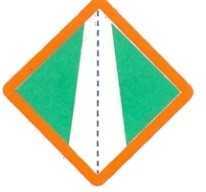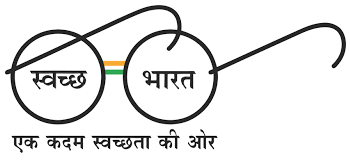- About Us
- PMGSY Guidelines
- Documents
- Operations Manual
- Grameen Sampark
- Core Network
- Standard Bidding Document
- Accounting & Audit Manuals
- Quality Assurance Handbook For Rural Roads Volume-I
- Office Manual
- Quality Assurance Handbook for Rural Roads Volume-II
- Handbook on Maintenance of Rural Roads In India
- Maintenance of Rural Roads: Guidance Note for States
- Annual Action Plan
- Procurement And Contract Management Manual
- Internship Scheme of UPRRDA
- Technical Documents
- Advertisements / Circulars
- Maintenance
- eMARG

- Rural Roads Maintenance Policies Of States
- Brochures on Rural Roads Maintenance
- Training Modules on Rural Roads Maintenance
- Impact Assessment Study of Improved Rural Roads Maintenance
- Strengthening the Capacity of Panchayati Raj Institutions – Managing Maintenance of Rural Roads
- eMARG
- Quality
- Guidelines on action to be taken on the Reports of the National Quality Monitors
- Empanelment of SQM's under UPRRDA
- Guidelines on Quality Assurance and Control Mechanism
- Guidelines on action to be taken on the Reports of the SQM's
- Guidelines on performance evaluation of National Quality Monitors
- Guidelines for Performance Evaluation of SQM
- SQM Inspection format- Maintenance works
- SQM Guidelines and Format
- Checklist For visit of area officers
- SQM Inspection Report Format
- De-empanelment of State Quality Monitors (SQMs)
- List of SQM’s (State Quality Monitors)
- List of SQC’s
- List of SQM Emeritus
- Training/Meeting
- iGOT Presentations

- 1. Advance Programme-Planning Design _Construction of Long Span Bridges-(Batch I)-22

- Prof M R Madav-Advanced Concept in the Geotechnical
- Pro MR Madav-Considerations in Design of BridgesN
- Shri Arvind Kumar Jaiswal-Seismic Effects on Performance of Long Span Bridges(1)
- Shri S Sai BABA-Sustainable design of long span Bridge
- Shri P G Venkat Ram Bridge Construction method and the failures Associated Method and the failures associated with them
- Sri P G Venkat Ram - Quality control measures that can prevent Bridge failures
- Shri S Sai Baba - Innovative launching
- 2. CONSTRUCTION AND QUALITY CONTROL OF FLEXIBLE AND RIGID PAVEMENTS

- L01- CSRK_PMGSY_T2022P3_QAQ 2122030341
- L02-Construction and Quality control of Subgrade and Granular layers
- L03- PMGSY_QC_55_03032022
- L04-GRK_Testing Cement Cement Concrete
- L05-PMGSY Soil properties
- L06- PMGSY_SS_Roughness_04032022
- L07-VR
- L08_VC_LTUB_4MAR2022_1
- L09-VR
- L10- PMGSY_NDT_SS_05032022
- L11_VC_LTMB_5MAR2022
- L12_VC_MMBMD_5MAR2022
- 3. GIS Curriculum for UPRRDA

- 4. New Technologies used in UPRRDA Roads

- FDR
- Lecture 0 Introduction of New Technologies
- Lecture 1-White topping. Short Panel Concrete Pavements and Cell filled concrete pavements
- Lecture 2-Roller compacted concrete pavements and Interlocking concrete block pavements
- Lecture 3- Utilization of waste plastic in Low volume Roads
- Lecture 4-Stabilization Methods for Low Volume Roads
- Lecture 5- Mord Specification for Low Volume Road
- Lecture 6- Design of Flexible Pavements for LVR Reinforced with Geosynthetics
- Lecture 7-Surface Dressing
- Lecture 8-Use of Geosynthetics in Low Volume Roads
- Lecture 9- USE OF MARGINAL MATERIALS IN LOW VOLUME ROADS
- 5. Pavement Design Construction and Maintenance

- 6. Preparation of DPR
- 7. Procurement of services
- 8. Road Safety Audit

- 1. Advance Programme-Planning Design _Construction of Long Span Bridges-(Batch I)-22
- Training Programmes
- Training Modules
- Training Institutions
- List of Trained Engineers & Contractor Staff

- Schedule of Training
- Login And Participation
- List of Certified Road Saftey Auditors
- Meeting
- iGOT Presentations
- Resource Center
- Photo Gallery
- External Links
Checklist For visit of area officers
Visit of Area Officers for Assessment of PMGSY
Part-A : Discussion with District Programme Implementation Units (DPIUs)
Area officers may hold a discussion with the officers of the DPIU for general assessment of the status of programme implementation in the district.As a part of this exercise, area officers should specifically check the status of implementation of the Online Management Monitoring and Accounting System (OMMAS).In particular, area officers may verify whether data is being regularly entered in the OMMAS and accuracy of the data is being verified by a dedicated officer in the PIU.For this purpose, area officers may log on to the website www.pmgsy.nic.in.After opening this website “District Reports” and “DP: District Profile” may be opened.This module provides complete information about the implementation of the programme in the selected district.Phasewise progress of works shown in the OMMAS may be compared with the information furnished by the PIU in the latest Monthly Progress Report (MPR) for assessing the accuracy of OMMAS.
Part-B : Field Inspection
Area officers may carry out visual inspection of a few ongoing/completed projects.During field inspection, area officers may pay specific attention to the following aspects:
Supervision
During execution, the work is to be inspected regularly by the JEs & AEs and periodically inspected by EEs and SEs.Frequency of visits of the officers of PIU and Regional level may be assessed.
Quality Monitoring
First tier of Quality Mechanism and Quality Control arrangements:In case of ongoing works, the operationalization of first tier of quality mechanism may be verified.As per provisions of the programme, every contractor is required to establish field laboratory for carrying out mandatory tests.Availability of the equipments in the field laboratory would depend on the nature of work.The field laboratory may be inspected and Quality Control registers may be checked.For recording the test results, Quality Control Register Part I is maintained.This register is to be countersigned by the JE and AE when the tests are conducted in their presence.The Quality Control Part II is record of issuance of non-confirmation reports.It may be seen by the Area Officers whether the field laboratory has been established and whether Quality Control registers are maintained.
Second Tier of Quality Control Mechanism:In case of ongoing works, the operationalization of second tier of quality mechanism may be verified. Independent State Quality Monitors (SQMs) are required to inspect the work at three stages – first when the work has just started or some earth work has been carried out, second inspection when the sub base or base course work is in progress and third inspection when work is nearing completion.The area officer may find out as to whether the work has been inspected by the SQMs at various stages.
General Quality of work
The assessment of general quality of on-going or completed work may be made by the Area Officer.General assessment about the quality of on-going or completed works may be recorded.While inspecting a complete road work assessment of general riding quality may be made by driving vehicle on the road. If it is comfortable to move on the roads at a speed of 40 km. per hour without jerks etc. the riding quality may be termed as reasonable.
Drainage
In case of ongoing or completed works drainage is very essential item.It may be checked as to whether the road pavement has adequate cross slope (camber) to ensure that water does not stagnate on the road surface.Generally, it is possible to assess, through visual inspection, whether the road surface has depression etc. which may cause the water to stagnate.
Maintenance
In case of completed roads inspected, the overall arrangements for maintenance and upkeep may be assessed.Works of Phase I and Phase II of the programme were executed on the basis of Standard Bidding procedures of the State. Therefore, the routine maintenance of roads should be carried out by the State as per provisions in their respective contracts.However, from Phase III and onwards Standard Bidding documents have been prescribed, wherein, it is provided that the routine maintenance would be carried out by the same contractor for 5 years and payment for this routine maintenance would be madeby PIU.While assessing the quality of maintenance, following items may be seen:
- Whether the road slopes and shoulders is free from vegetation which may obstruct the traffic flow?
- Whether the rain cuts in the embankment have been repaired?
- Whether shoulders are in good condition?
- Whether the road has any pot holes/cracking or depressions etc? If so, whether these defects have been repaired?
Transparency
As per programme guidelines Citizen Information Board and other informatory boards are required to be fixed.Information on all these boards is required to be displayed in local language.The area officer may see the compliance of this during the field visit.
Contract Management
A Standard Bidding document has been prescribed for procurement of work and contract management.A work programme has to be prepared for each project and progress of work has to be assessed regularly by the PIUs with reference to the approved work programme.In case of delay, the contract provides for levy of liquidated damages.Area Officers may verify whether progress of work is systematically monitored with reference to the approved work programme and liquidated damages have been levied/withheld for any delay in execution.
General Observations
Area Officers may, through local interaction, makean overallassessmentregardingtheimprovementintransportation servicesto thetargethabitations.They may also comment on any significant and feasible socio-economic impact brought about by provision of all whether connectivity.Area Officers may comment on any major implementation constraints observed during the field inspection.
Area Officers may record their observations in theen closed format on the basis of their inter action with the PIUs as well as visual in spection of projects.
Ministry of Rural Development
(RC Division)











